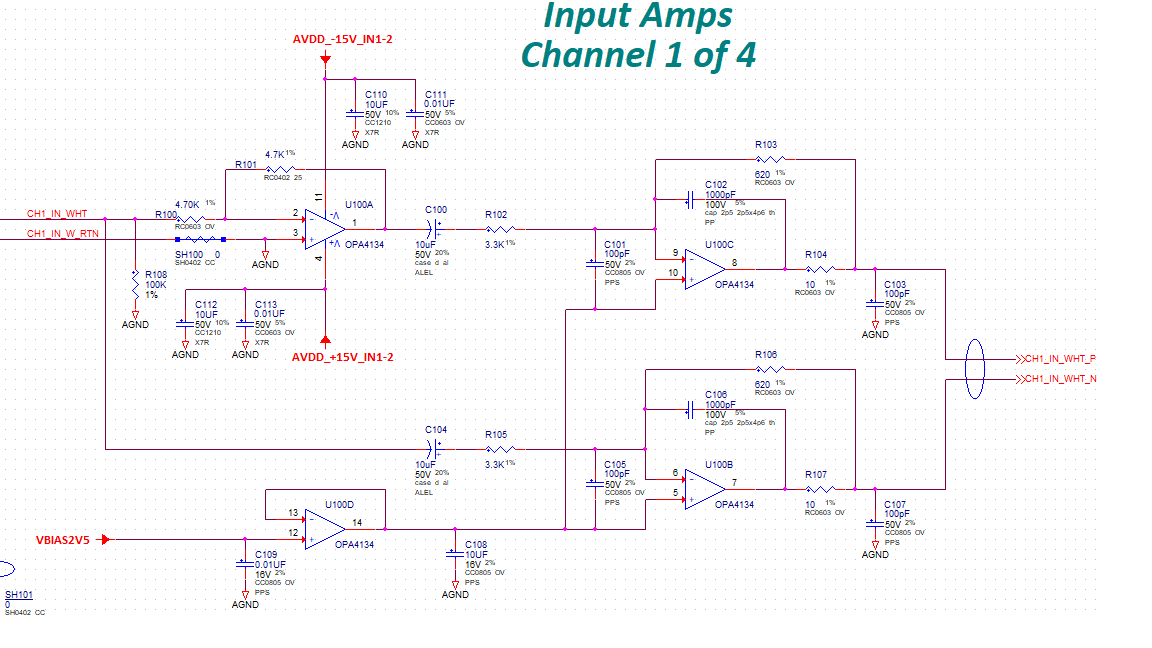Hi,
I recently worked on an audio line input to an A/D converter.
The circuit seems to work properly, but I've noticed that the OPA4134 gets really hot.
Is this normal for this opamp? or something I should change to avoid this issue.
I've pasted the circuit below.


